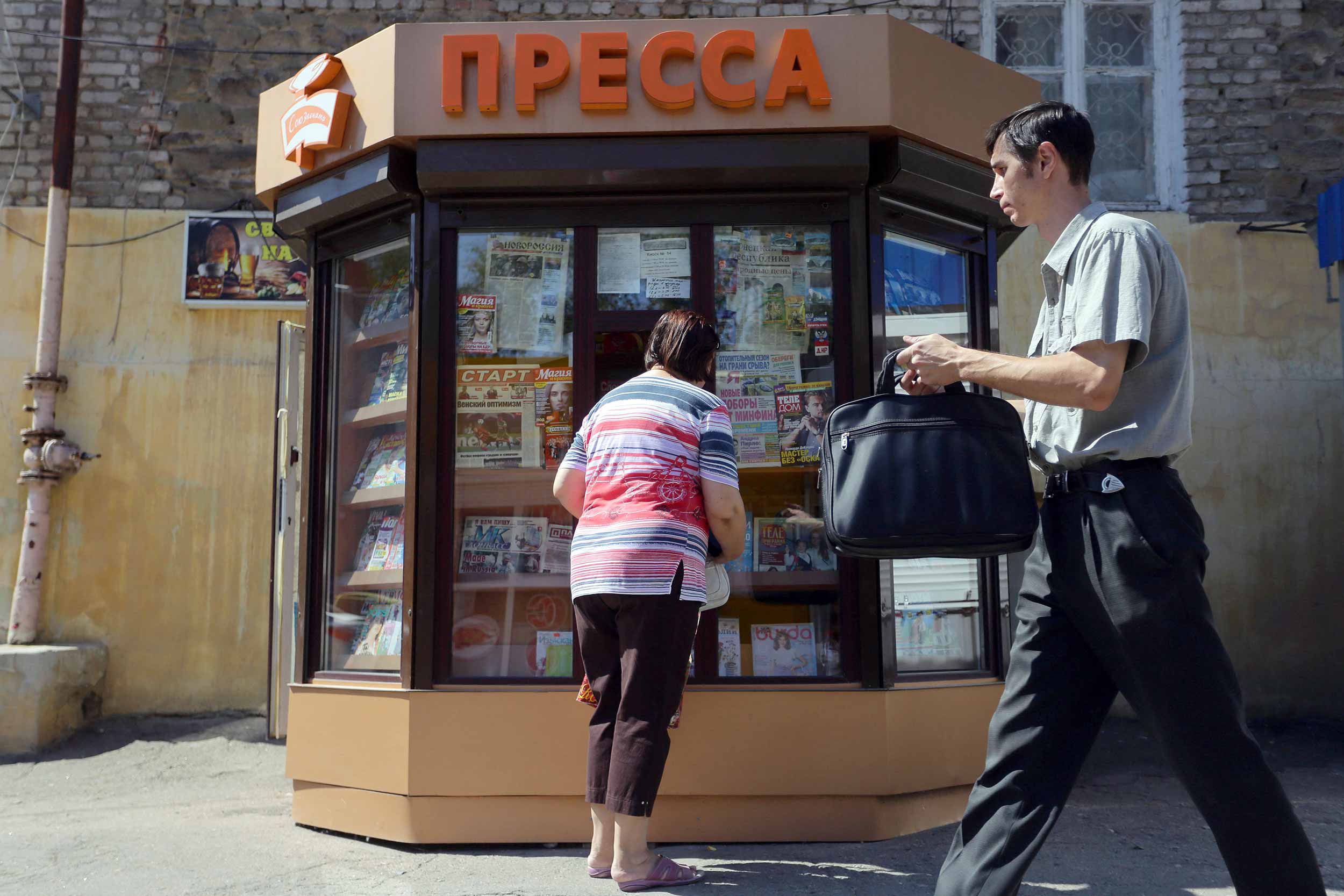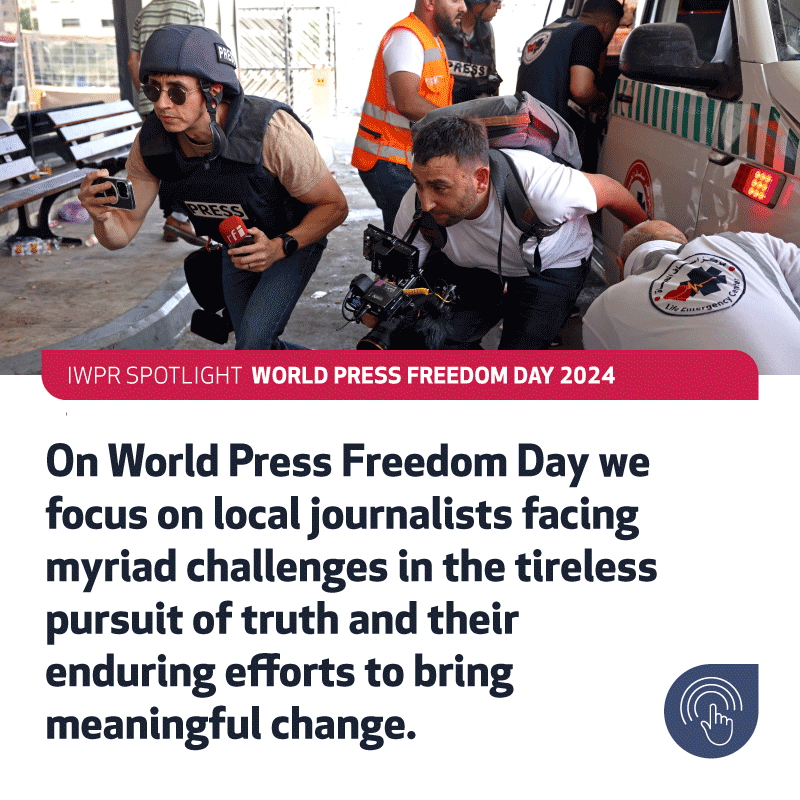Ukraine’s Information Vacuum
Those living under occupation can only get their news from Russian media and social networks.
Accessing independent information in the occupied parts of Ukraine – where Russia controls all internet providers, telecommunication services and media – is both a complicated and dangerous affair.
The only way to access Ukrainian content is, for example, to disable the Russian mobile phone card, set up a reliable VPN, go to the internet via Wi-Fi and turn on the VPN.
In addition, if de facto officials later find a VPN or other signs that the individual has viewed “banned” content, they face arrest.
“All residents of the occupied territories are hostages, and access to media is just one manifestation of this."
"In essence, all residents of the temporarily occupied territories are hostages, if not prisoners, of the Russian occupiers, and access to the media is just one manifestation of this," explained Natalya Vyhovska, an analyst from the Ukrainian Institute of Mass Information, a body that monitors propaganda.
Since the full-scale invasion of February 2024, Russia has built a single information space in the occupied districts of Kherson, Zaporizhzhya, Donetsk and Luhansk regions. It is almost impossible to get news from non-Russian sources; few people know how to circumvent this near total control. Vyhovska noted that this immersion in disinformation inevitably had a toxic psychological effect.
"After two years of isolation, lies and manipulation, people despair and resign themselves [to their fate],” she said. “And also, with the help of the same Russian propaganda, they get the idea that Ukraine has abandoned and forgotten them. Which, judging by the analysis of a large number of propaganda telegram channels, occupation and central propaganda media, the Russian occupiers and propagandists themselves constantly emphasise."
Russian media in the occupied territories emphasise historical events and promote the idea that Russia and Ukraine are supposedly "one people". There is much coverage of youth events involving competitions, trips to Crimea or to regions of Russia such as Anapa, Krasnodar and Moscow, sometimes tied to Russian political groups.
Recently, there has been intense coverage of Russia's tactical battlefield successes and Ukrainian challenges with mobilisation and the delayed military aid from the West.
Analysts note that promoting narratives that apparently support an imminent Ukrainian defeat is another Kremlin tactic to break the morale of residents of the occupied territories.
"When we laugh at the ridiculous propaganda on federal channels, we do not fully understand that people are surrounded on all sides by the same delusional, completely distorted information reality,” said Ihor Solovei, head of the Centre for Strategic Communications and Information Security.

Propaganda Sources
Russia has dedicated considerable resources to the creation of media in the areas under occupation.
In the occupied territory of the Zaporizhzhia region, it offers a Russian World free satellite TV package, which also connects Kherson and the part of the Kharkiv region they control.
Television - traditionally watched more by the elderly – is an important part of the strategy.
"I assume, although we have not conducted formal research on this issue, that television news works powerfully on the emotional charge that causes the need to share it,” said Yuliya Maksymtsova, an analyst with the Communication Analysis Team-Ukraine NGO, which monitors disinformation.
She noted that noted the Kremlin’s discourse probably fell on fertile ground, as likely “everyone who did not believe in Russian propaganda mostly left before the full-scale invasion, or after it".
The Za!Media media holding, headquartered in Melitopol, was created specifically for the occupied Zaporizhia region. It includes Za!TV television, Za!Radio radio, the Za!Media website and the Zaporizhsky Visnyk newspaper which has a weekly circulation of 300,000.
“Any contact with non-propaganda media means mortal danger.”
"Also, the temporarily occupied Zaporizhzhia region is inundated with crazy circulation of ‘special editions’ of the Komsomolskaya Pravda propaganda [newspaper]: during Putin's election, its circulation reached 750,000 copies per week,” Vyhovska said. “There is also an extensive network of Telegram channels operating in the temporarily occupied territories, which were created even before the start of the full-scale invasion."
Yevhenia Virlych, editor-in-chief of the Kherson publication Kavun.City, also noted the fresh influx of dedicated propaganda media in occupied regions.
A recent addition to the landscape has been the online New.Media resource, which she said the Russians had launched as "a publication for the residents of Novorossiya and Donbas, which speaks on behalf of these residents". She said that the stated intent was to help locals "integrate" into "a large multinational country".
How best to combat the onslaught of propaganda remains unclear. Vyhovska said that access to unbiased sources of information would only be possible after the liberation of the occupied territories.
"The other day, I had a conversation with the editor of the Melitopol publication, which continued to work in Melitopol at the beginning of the occupation, until the occupiers started terrorising employees and family members,” she said. “We discussed how access to information can be improved. Currently, the answer is – there is no way, because any contact with non-propaganda media means literally mortal danger for those who try to do it.”
However, Solovei argued that despite the huge obstacles it was nonetheless possible to make some improvements to access to information for people living under occupation.
"This can be done through radio broadcasters on the front line, through Telegram channels that are still open, through YouTube, Tik-Tok - video content is not yet monitored in the same way during checks at checkpoints,” he said. “There is a lot of work waiting for us there after liberation. But this work must be started now."

